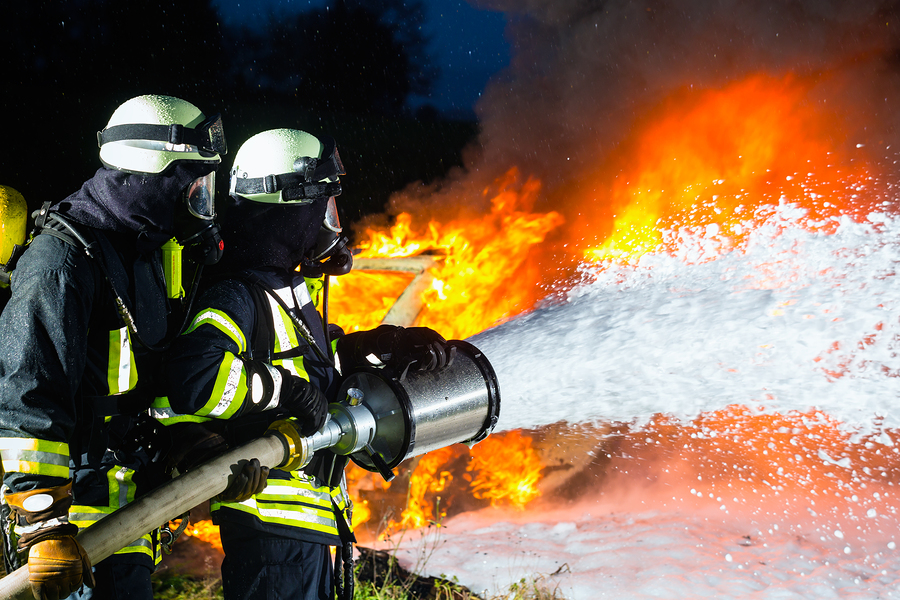History of Firefighting Foam
The trouble with PFAS/PFOA/PFOS is that they can accumulate in the human body and remain there for long periods of time, and long-term exposure to the chemicals at high concentrations has been associated with serious adverse health consequences, including certain cancers. Exposure to toxic PFAS chemicals in firefighting foam can occur through oral ingestion, absorption through the skin or inhalation through exposure in the atmosphere, and those at the highest risk for exposure to potentially harmful PFAS in firefighting foam are firefighters who served in the U.S. military and those assigned to airports, where firefighting foam was the standard for suppressing petroleum and jet fuel fires. In fact, the Navy and other branches of the U.S. military have used AFFF since at least the 1960s, to put out emergency fires and even during training exercises and non-critical missions, and the Federal Airport Administration (FAA) required the use of firefighting foam at airports up until 2018.
PFAS-containing firefighting foam has been sold for decades in the United States as a safe and effective fire suppression product, but we know now that the same qualities that make PFAS in AFFF great for extinguishing flammable liquid fires also make the chemicals persist in the environment. Once PFAS are released into the environment, they can contaminate soil, groundwater and surface water, and contamination of this kind has been found in higher concentrations near airports, military bases, local fire departments and other places where firefighting foam was used extensively. PFAS chemicals are so ubiquitous, in fact, that they have been dubbed “forever chemicals,” and serious concerns have been raised about toxic levels of PFAS in the environment, in the products we use on a daily basis, and even in our bodies. The U.S. Agency for Toxic Substances and Disease Registry has reported finding PFAS chemicals in nearly every blood sample they take. And a 2018 report by the U.S. Centers for Disease Control and Prevention (CDC) linked PFAS chemicals to cancer, thyroid disease, liver damage, birth defects and other adverse health effects.


